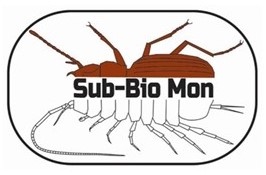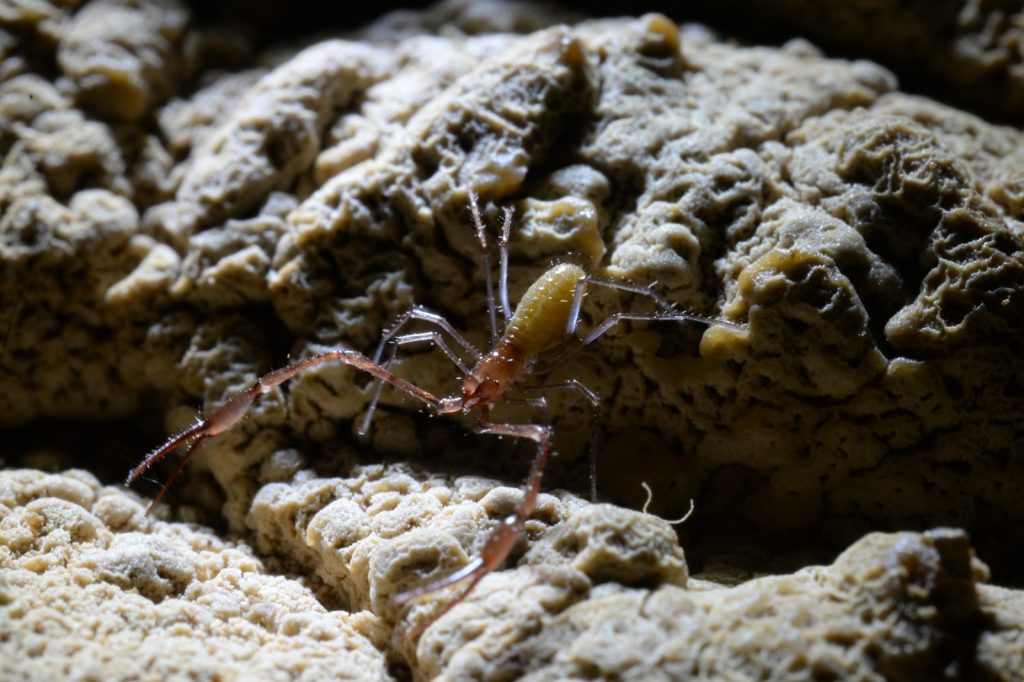After the publication of Essai sur les problemes biospeologiques in 1907, the first important work dedicated to biospeleology in the world, and the initiation of an international research program “Biospeologica” created to study cave fauna, systematic researches in Romania advanced on both terrestrial and aquatic groups using both traditional taxonomy and new methods.
Our investigations on cave fauna are focused on:
- Systematics and taxonomy of copepods crustaceans, beetles and spiders
- Biodiversity, dynamics, adaptations and evolutions of subterranean species to subterranean realm
- Cave fauna monitoring and conservation
- Palaeocology using fossil ostracods from cave sediments to reconstruct the paleoenvironment at the regional scale
Developing and testing approaches to monitor subterranean biodiversity in karst (Sub-BioMon)
 Subterranean karst ecosystems have high species diversity with specialized physiological and morphological adaptations. Due to the environment’s complexity and heterogeneity, along with species identification challenges (including the lack of taxonomists), estimating biodiversity and monitoring of species remain difficult. Within Sub-BioMon (2024-2027) an ERANET project (no. 26/2024) of the Biodiversa+ call we aim to provide a standardized method and protocol for monitoring subterranean biodiversity. We monitor the biodiversity of cave fauna with focus on groundwater crustaceans, spiders, and beetles using standardized methods and novel techniques for species identifications such is eDNA. Lead by the University of Ljubljana (Slovenia) the project unify cave biologists from six European countries: Slovenia, Italy, Romania, Luxembourg, Hungary and Belgium.
Subterranean karst ecosystems have high species diversity with specialized physiological and morphological adaptations. Due to the environment’s complexity and heterogeneity, along with species identification challenges (including the lack of taxonomists), estimating biodiversity and monitoring of species remain difficult. Within Sub-BioMon (2024-2027) an ERANET project (no. 26/2024) of the Biodiversa+ call we aim to provide a standardized method and protocol for monitoring subterranean biodiversity. We monitor the biodiversity of cave fauna with focus on groundwater crustaceans, spiders, and beetles using standardized methods and novel techniques for species identifications such is eDNA. Lead by the University of Ljubljana (Slovenia) the project unify cave biologists from six European countries: Slovenia, Italy, Romania, Luxembourg, Hungary and Belgium.

Chasing ice caves fauna
Ice caves present a particularly challenging environment for the existence of life forms, where the temperature is constantly bellow 0°. They present a mosaic of microhabitats commonly found in caves, i.e., fissures, cracks, microfissures, pools (temporary or permanent), and subterranean rivers and lakes but also have periglacial sectors, with various ice formations (ice walls, ice stalagmites, and floor ice) suitable for the life of particular fauna. Usually they are glacial relicts and poses specific physiology to cope with low temperature. An ongoing endeavor is focused on the characterization of ice caves fauna biodiversity in Romania looking for glacial relicts and to depict their physiological adaptations to survive at low temperatures.

